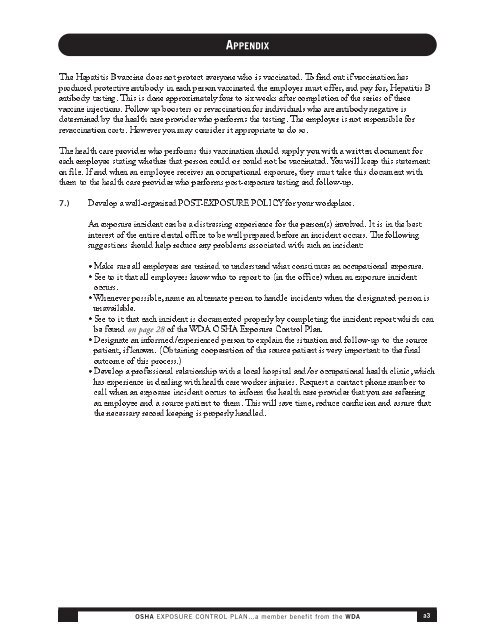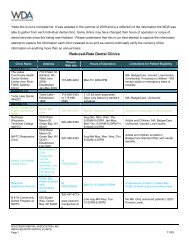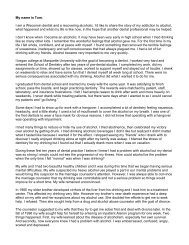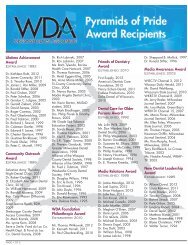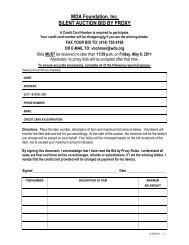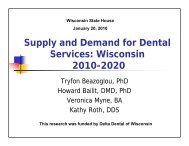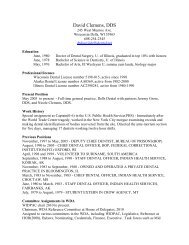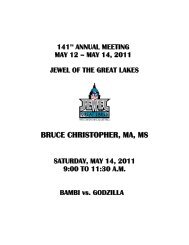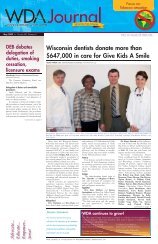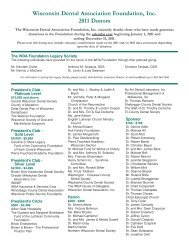Download the OSHA manual - Wisconsin Dental Association
Download the OSHA manual - Wisconsin Dental Association
Download the OSHA manual - Wisconsin Dental Association
Create successful ePaper yourself
Turn your PDF publications into a flip-book with our unique Google optimized e-Paper software.
APPENDIXThe Hepatitis B vaccine does not protect everyone who is vaccinated. To find out if vaccination hasproduced protective antibody in each person vaccinated <strong>the</strong> employer must offer, and pay for, Hepatitis Bantibody testing. This is done approximately four to six weeks after completion of <strong>the</strong> series of threevaccine injections. Follow up boosters or revaccination for individuals who are antibody negative isdetermined by <strong>the</strong> health care provider who performs <strong>the</strong> testing. The employer is not responsible forrevaccination costs. However you may consider it appropriate to do so.The health care provider who performs this vaccination should supply you with a written document foreach employee stating whe<strong>the</strong>r that person could or could not be vaccinated. You will keep this statementon file. If and when an employee receives an occupational exposure, <strong>the</strong>y must take this document with<strong>the</strong>m to <strong>the</strong> health care provider who performs post-exposure testing and follow-up.7.) Develop a well-organized POST-EXPOSURE POLICY for your workplace.An exposure incident can be a distressing experience for <strong>the</strong> person(s) involved. It is in <strong>the</strong> bestinterest of <strong>the</strong> entire dental office to be well prepared before an incident occurs. The followingsuggestions should help reduce any problems associated with such an incident:Make sure all employees are trained to understand what constitutes an occupational exposure.• See to it that all employees know who to report to (in <strong>the</strong> office) when an exposure incidentoccurs.• Whenever possible, name an alternate person to handle incidents when <strong>the</strong> designated person isunavailable.• See to it that each incident is documented properly by completing <strong>the</strong> incident report which canbe found on page 28 of <strong>the</strong> WDA <strong>OSHA</strong> Exposure Control Plan.• Designate an informed/experienced person to explain <strong>the</strong> situation and follow-up to <strong>the</strong> sourcepatient, if known. (Obtaining cooperation of <strong>the</strong> source patient is very important to <strong>the</strong> finaloutcome of this process.)• Develop a professional relationship with a local hospital and/or occupational health clinic, whichhas experience in dealing with health care worker injuries. Request a contact phone number tocall when an exposure incident occurs to inform <strong>the</strong> health care provider that you are referringan employee and a source patient to <strong>the</strong>m. This will save time, reduce confusion and assure that<strong>the</strong> necessary record keeping is properly handled.<strong>OSHA</strong> EXPOSURE CONTROL PLAN…a member benefit from <strong>the</strong> WDAa3


